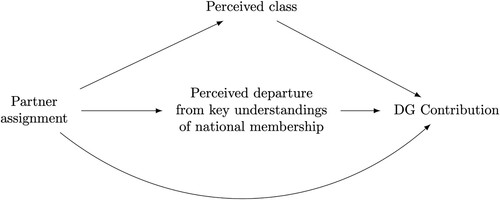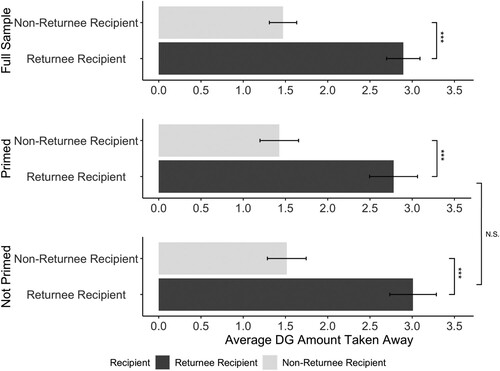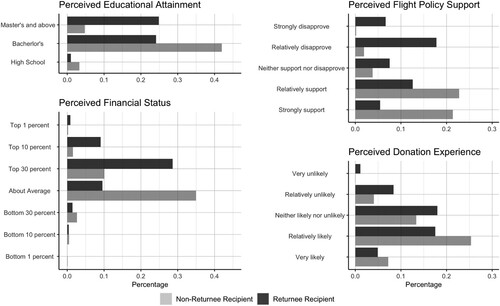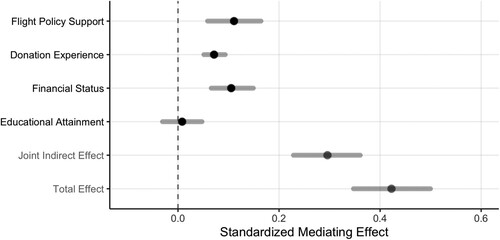Figures & data
Figure 1. DAG representing the effect of being paired with an overseas returnee on DG contribution mediated by the participants’ perceptions of the paired partner.

Figure 2. Average amount taken away in the give-or-take DG by the recipient’s international return experience during the pandemic.
Note: The results correspond to SI Table S2. Error bars denote 95% confidence intervals. *** indicates statistically significant differences in contribution (p < 0.001), while N.S. signals non-significance. Positive averages indicate the participants took away the specified amount from the paired players.

Figure 3. Distributions of perceived characteristics of recipients by their international return experience during the pandemic.
Note: Four relevant items collected in the survey measured participants’ perceptions of their partners and were treated as mediators of differential treatment: educational attainment (left panel, top), financial status (left panel, bottom), levels of support towards China’s flight restriction policy (right panel, top), and likelihood of having donated to China’s anti-COVID effort (right panel, bottom). The participants’ perceptions of non-returnees and returnees are different (p < 0.01, Table S4), which makes the mediation analyses possible.

Figure 4. Standardized mediating effects on DG contribution.
Note: Full sample and coefficients are standardized. Whiskers denote 95% confidence intervals constructed with 1000 simulations based on a quasi-Bayesian Monte Carlo approximation. Participant-level controls include gender, age, educational attainment, monthly family income, residence in a first-tier city, CCP membership, Hukou type, and participation in a mass PCR test in the past month.

Figure 5. Standardized interaction effect of cosmopolitan identity and returnee recipient assignment on DG contribution.
Note: Full sample and coefficients are standardized. Whiskers and shadows denote 95% confidence intervals. Participant-level controls include gender, age, educational attainment, family income, residence in a first-tier city, CCP membership, household registration type, and participation in a mass PCR test in the past month.

Supplemental Material
Download PDF (2.6 MB)Data availability statement
The data and code necessary to reproduce the analyses reported are available on the Open Science Framework at: https://osf.io/csd49/.
